I'd like an algorithm to organize a 2D cloud of points in front of a bar graph so that a viewer could easily see the spread of the data. The y location of the point needs to be equal/scaled/proportional to the value of the data, but the x location doesn't matter and would be determined by the algorithm. I imagine a good strategy would be to minimize overlap among the points and center the points.
Here is an example of such a plot without organizing the points:
I generate my bar graphs with points in front of it with MATLAB, but I'm interested just in the best way to choose the x location values of the points.
I have been organizing the points by hand afterwards in Adobe Illustrator, which is time-consuming. Any recommendations? Is this a sub-problem of an already solved problem? What is this kind of plot called?
For high sample sizes, I imagine something like the following would be better than a cloud of points.
I think, mathematically, starting with some array of y-values, it would maximize the sum of the difference between every element from every other element, inversely scaled by the distance between the elements, by rearranging the order of the elements in the array.
Here is the MATLAB code I used to generate the graph:
y = zeros(20,6);
yMean = zeros(1,6);
for i=1:6
y(:,i) = 5 + (8-5).*rand(20,1);
yMean(i) = mean(y(:,i));
end
figure
hold on
bar(yMean,0.5)
for i=1:6
x = linspace(i-0.3,i+0.3,20);
plot(x,y(:,i),'ro')
end
axis([0,7,0,10])

